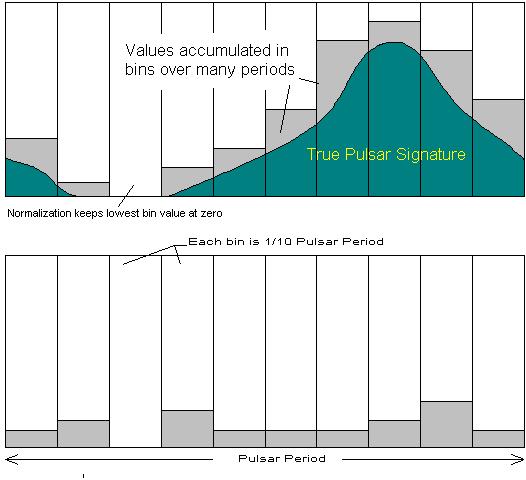
It is possible for amateur radio astronomers to detect some of the stronger pulsars by use of digital signal processing techniques given an adequate gain antenna.However this is a project best pursued after gaining considerable experience. One trick derives from knowing the period of the pulsar in advance. We then sample the signal using a time base that is some integral fraction of the period. Each sample taken during the duration of a single pulse period is assigned to a bin. The samples can then be folded back so that samples from corresponding bins are added together.

Each time we add a new series of bin values for the ongoing totals, we "renormalize" by subtracting an an amount from all of the bins so that the weakest bin value is brought back to zero. Random noise in each bin tends to average out and bins which have even slightly higher averages will gradually "grow" above the others. A picture then emerges which shows how the average strength of the pulsar signal varies over it's period.
.
The following links to .WAV files will allow you to hear the audio frequency modulation of radio noise generated by pulsars. If your .WAV file player has a scope function on it you will be able to see the regular nature of the waveforms. These files are quite long (some close about .5 meg).
CP0834 (very faint... for fun, try DSP on this one).
European Pulsar Network Data Archive
Oleg Doroshenko has free timing and catalog software for pulsars.
HOME | BEGINNERS | JUPITER | SOLAR | PULSARS | PROJECTS | FAQ | BOOKS | SOFTWARE | SUPPORT | ORDERING | LINKS